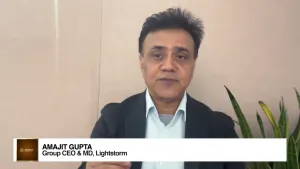
Indonesia’s top three telcos to post higher revenues this year: Fitch
Operators push for higher mobile app utilisation.
Fitch Ratings expects Indonesia’s three biggest telecommunications companies to register a single-digit rise in revenues this year.
The credit rating agency said the country’s telco operators will likely see higher average revenue per user (ARPU) this year on the back of price hikes and higher data consumption by subscribers.
“We believe telcos will focus on profitable growth by adding high-value subscribers rather than competing on price,” Fitch Ratings said in a commentary dated 10 August.
For the country's three biggest providers, it sees XL Axiata and Indosat posting higher revenue growth than the industry average while Telkom Indonesia’s revenue will likely increase slightly slower than its peers.
READ MORE: Accounting complexities seen in telco reorganisations in Asia, India
Fitch said Telkom, the nation’s largest operator with 157 million subscribers, could see its earnings before interest, taxes, depreciation and amortization (EBITDA) margin narrow slightly due to the continued loss of legacy revenue, slimmer margin at its interconnection business, and additional spectrum expense.
It said the firm is using data analytics and targeting higher-value customers to drive higher ARPU.
Indosat, with a customer base of over 98 million subscribers, is aiming to increase its ARPU to IDR 40,000 (US$2.61) per month by 2024, a goal Fitch believes can be supported by higher spending from its active users.
Its EBITDA margin for 2023 should end at around 250 basis points higher from 2022 on the back of cost optimisation and revenue growth, it said.
XL Axiata, which services about 55 million subscribers across the country, still has room for further growth in ARPU thanks to healthy data traffic growth, according to Fitch. Its margin will continue to widen due to low base but the full-year margin will likely end flat compared to 2022.
The rating agency also highlighted the operator’s lead in digital adoption with the volume of monthly active users rising to 47% of its customer base last quarter from just 45% in the first quarter.
“Telcos are pushing subscribers to engage on their mobile applications to reload and purchase services,” Fitch said. “This allows telcos to better understand their customers’ consumption patterns and use personalised offerings to improve customer spending and stickiness.”














